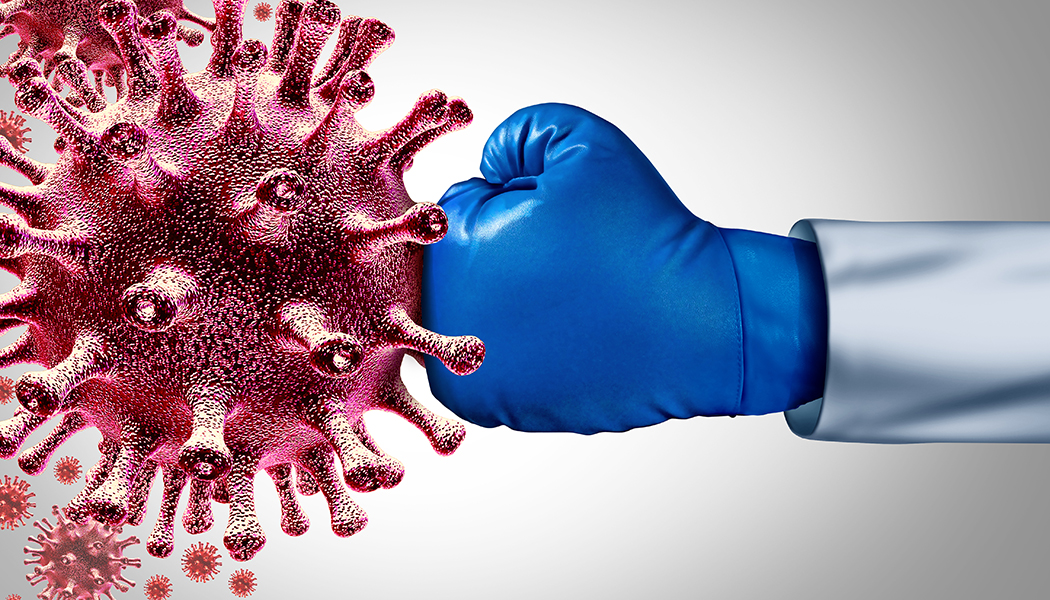Immune Response to COVID-19 Strengthens Over Time
By OREGON HEALTH & SCIENCE
UNIVERSITY
Immunity from COVID-19 appears to gather strength with more time between vaccination and infection, a new laboratory study from researchers at Oregon Health & Science University suggests.
The findings carry implications for vaccine recommendations as the pandemic transitions to an endemic state.
Researchers measured the antibody response in blood samples for a group of people who gained so-called “hybrid immunity” through two means: either vaccination followed by a breakthrough infection, or by getting vaccinated after contracting COVID-19.
They measured the immune response in blood samples of 96
generally healthy OHSU employees and found that the immune response was
uniformly stronger the longer the time period between vaccination and
infection. The longest interval measured was 404 days.
Their
findings suggest that vaccine boosters should be spaced no more frequently than
a year apart, at least among healthy people.
“Longer intervals between natural infection and vaccination appear to strengthen immune response for otherwise healthy people,” said co-senior author Fikadu Tafesse, Ph.D., associate professor of molecular microbiology and immunology in the OHSU School of Medicine.
The
study came just before an advisory panel for
the Food and Drug Administration (FDA) met on Thursday, January 26, to consider
the nation’s COVID-19 vaccine strategy going forward.
Published
in the Journal for Clinical Investigation Insight, the new research is the latest in a series of
laboratory discoveries by OHSU scientists revealing a pattern of strengthened
immune response through hybrid immunity. Their findings suggest that the
magnitude, potency, and breadth of hybrid immune response all increased with a
longer time period between exposure to the virus — whether through vaccination
or natural infection.
This
likely is related to the body’s immune response maturing over time, said
co-senior author Marcel Curlin, M.D., associate professor of medicine
(infectious diseases) in the OHSU School of Medicine and medical director of
OHSU Occupational Health.
“The
immune system is learning,” Curlin said. “If you’re going to amplify a
response, what this study tells us is that you might want to boost that
response after a longer period of learning rather than early after exposure.”
Further,
the research team found that it didn’t matter whether someone developed hybrid
immunity by getting vaccinated after contracting COVID-19 or after a
breakthrough infection following vaccination. Both groups developed an equally
potent immune response.
The
findings suggest long-lasting potency of so-called “memory cells,” the B cells
that recognize an invading virus and generate protein antibodies to neutralize
the virus and its many variants. The authors write that an ever-growing pool of
people who have contracted the SARS-CoV-2 virus
stand to benefit from vaccination, even if they’ve delayed it until now.
Relying
on natural infection alone is a bad idea, “given the risks of severe illness,
long-term complications, and death,” the authors write.
The
researchers say the findings are the latest to point toward the virus evolving
to an endemic state.
“Our
results point to a future where inevitable vaccine breakthrough infections
would be expected to help build a reservoir of population-level immunity that
can help blunt future waves and reduce the opportunity for further viral
evolution,” they write.
The
researchers cautioned that the immune response was measured in relatively
healthy people, and boosters may be advisable on a more frequent basis among
vulnerable people who are older or are immunocompromised.
Reference:
“An extended interval between vaccination and infection enhances hybrid
immunity against SARS-CoV-2 variants” by Timothy A. Bates, Hans C. Leier,
Savannah K. McBride, Devin Schoen,2 Zoe L. Lyski, David D. Xthona Lee, William
B. Messer, Marcel E. Curlin and Fikadu G. Tafesse, 26 January 2023, JCI Insight.
DOI:
10.1172/jci.insight.165265
Funding
for this study was supported by the M.J. Murdock Charitable Trust; the OHSU
Foundation; the National Institutes of Health training grant T32HL083808; NIH
grant R01AI145835; and a grant from the OHSU Innovates IDEA fund. The content
is solely the responsibility of the authors and does not necessarily represent
the official views of the NIH.
